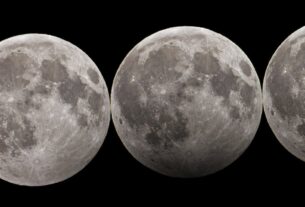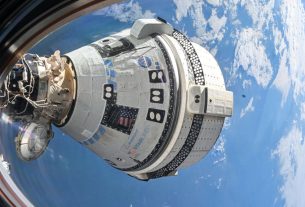Further information
The projects
Sensing NO2 emissions to evaluate net zero initiatives (SNEEZI)
Project lead: University of Edinburgh
Funding amount: £498,916
Avoiding the worst impacts of climate change relies on measuring and reducing emissions of atmospheric greenhouse gases, including nitrogen dioxide (NO2).
SNEEZI is a novel instrument designed to measure NO2 at high resolution from a constellation of small satellites.
During the project, the team will capture mission requirements, develop a business case, provide a conceptual design of the SNEEZI satellite instrument, and perform laboratory trials of the core technology basis, building on existing instrument concepts.
BoatSeek
Project lead: Satellite Vu Ltd with support from Leonardo UK and Surrey Satellite Technology Ltd
Funding amount: £493,693
The BoatSeek project aims to develop a high-performance infrared detector for marine and climate applications.
It will enhance an existing detector to result in a larger volume of high-resolution thermal image data and enable broader area coverage for applications, including illegal fishing, forest fire monitoring and vegetation stress for high-value agriculture.
Multiplexed laser heterodyne radiometer (MUX-LHR)
Project lead: STFC RAL Space
Funding amount: £364,667
The laser heterodyne radiometer (LHR) is a compact, lightweight and low power instrument for performing atmospheric composition measurements from small satellite platforms.
The MUX-LHR will record spectral information simultaneously rather than sequentially, significantly reducing measurement times compared to the current instrument. This is a necessary development that will make scalable constellations viable.
The MUX-LHR has potential to address three important areas:
- climate change monitoring, particularly greenhouse emission monitoring
- improved data for use in numerical weather prediction
- air quality monitoring, including pollutant emissions, transport and exposure
Climate for Earth (CLEAR)
Project lead: Surrey Satellite Technology
Funding amount: £499,515
CLEAR will design a new generation of low-cost sensors that can help fill the data gaps needed to tackle climate change, including understanding how the surface temperature of Britain and its surrounding waters are changing.
Solar occultation limb sounding transformative instruments for climate exploration (SOLSTICE)
Project lead: STFC RAL Space
Funding amount: £495,894
SOLSTICE aims to improve monitoring of changes in the atmosphere using two instruments working together:
- High-resolution InfraRed Occultation Sounder is a thermal infrared spectrometer providing information on atmospheric transmission of gases
- Hyperspectral Solar Disc Imager is an imager for water vapour, aerosols and air pressure
Working together, these instruments will enable highly accurate and high-resolution atmospheric composition measurements on a CubeSat platform.
This will help address a gap in our understanding of the impact of greenhouse gases in particular atmospheric regions.
Global swath-mapping lidar satellite and its applications (GLAMIS)
Project lead: Space Flow Ltd.
Funding amount: £256,762
Climate models of forest carbon storage have high levels of uncertainty. To improve carbon forecast estimates, we need good data on what there is now and how it is changing. More reliable carbon maps are also required for monitoring and verification of off-setting schemes and carbon credits.
Through a constellation of small satellites, GLAMIS will increase the density of coverage of forest quality data altimetry. A collaboration of leading UK institutions and companies has been assembled under the leadership of the University of Edinburgh to develop a new LiDAR modality and new instrument for GLAMIS.
Within the context of the EO4MCM programme the core elements are being taken to the level of preliminary design, which will create a platform for UK entities to make a major contribution to the GLAMIS mission.
Terrahertz SmallSat for EO
Project lead: STFC RAL Space
Funding amount: £73,000
The aim of the project is to establish the concept of a single–THz-channel, atmospheric limb-sounding mission for the upper atmosphere that can be deployed on a cube or small-satellite platform.
Such a mission would resemble a descoped version of RAL Space’s Earth Explorer candidate mission, Keystone, which aims to study a range of atmospheric processes as well as the impacts of space weather.
It could deliver much of the Keystone science, but in contrast to a full-fledged Earth Explorer satellite, it would be suitable for implementation through a smaller space programme. This study will define the cornerstones of such a mission (meaning, the scientific and engineering budgets and requirements).



